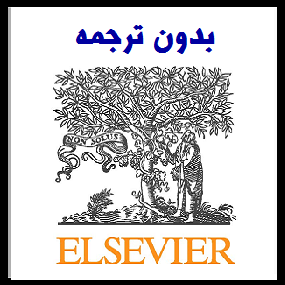مقاله انگلیسی ارتباط دو طرفه بین پسوریازیس و افسردگی (2020 الزویر)


| عنوان فارسی مقاله | ارتباط دو طرفه بین پسوریازیس و افسردگی: دو مطالعه پیگیرانه طولی با استفاده از یک گروه نمونه ملی |
| عنوان انگلیسی مقاله | Bidirectional association between psoriasis and depression: Two longitudinal follow-up studies using a national sample cohort |
| ترجمه کامپیوتری فهرست مطالب | طرح کلی نکات برجسته خلاصه کلید واژه ها 1. معرفی 2. روشها 3. نتایج 4. بحث مشارکتهای نویسنده اعلامیه رقابت بهره تقدیرنامه ها ضمیمه. مواد تکمیلی منابع |
| فهرست مطالب | Outline Highlights Abstract Keywords 1. Introduction 2. Methods 3. Results 4. Discussion Author contributions Declaration of Competing Interest Acknowledgments Appendix. Supplementary materials References |
| نمونه ترجمه کامپیوتری | چکیده
زمینه مواد و روش ها نتایج 1. مقدمه پسوریازیس یک بیماری التهابی مزمن است که با پوست دارای پلاک و مقیاس نقره ای مشخص می شود (کیم و همکاران ، 2017). شیوع پسوریازیس تقریباً 2٪ -3٪ در سراسر جهان است (کریستوفرز ، 2001 ؛ راچاکوندا و همکاران ، 2014) و تقریباً 0.3٪ -0.4٪ در جمعیت آسیا (کوبوتا و همکاران ، 2015؛ لی و همکاران ، 2017؛ ییپ ، 1984). پسوریازیس تأثیر روانی اجتماعی بر روی بیماران دارد که می تواند شامل ننگ و انزوا اجتماعی باشد که منجر به کاهش کیفیت زندگی می شود (Krueger et al.، 2001؛ Wahl et al.، 2002). به همین ترتیب ، پسوریازیس با پیشرفت بیماری روانی از جمله اضطراب ، افسردگی و خودکشی همراه بوده است (کیم و همکاران ، 2017 ؛ کرد و همکاران ، 2010). مکانیسم پاتوفیزیولوژیک پسوریازیس پیچیده است و شامل اختلال در سیستم ایمنی و عوامل محیطی می شود (Boehncke، 2015؛ Kim and Krueger، 2015). پاسخ های ایمنی سلولی کلاسیک T (Th) 1 و Th17 و سایر انواع سیستم های ایمنی ذاتی و سازگار به نظر می رسد که در پیشرفت پسوریازیس نقش دارند (Boehncke ، 2015). توجه؛ (این ترجمه توسط نرم افزار انجام شده و ویرایش نشده است و احتمال وجود اشتباه در آن وجود دارد. در صورت ثبت سفارش، ترجمه توسط مترجمین مجرب انجام خواهد شد. برای مشاهده نمونه ترجمه های تخصصی و اخیر مترجمین جهت اطمینان از کیفیت ترجمه، اینجا کلیک نمایید.) |
| نمونه مقاله انگلیسی |
Abstract BackgroundFew studies have investigated the bidirectional association between psoriasis and depression. The aim of our study was to identify the association between psoriasis and depression. MethodsData collected by the Korean Health Insurance Review and Assessment from 2002 to 2013 were used. In study I, psoriasis patients (n = 10,932) were matched 1:4 with control I group participants. In study II, depression patients (n = 60,383) were matched 1:4 with control II group participants. Matching was performed for age, sex, income, and region of residence. The stratified Cox-proportional hazard model was used to calculate the hazard ratio (HR) with crude and adjusted models. ResultsIn study I, the adjusted HR for depression was 1.13 (95% confidence interval (CI) = 1.03–1.24) in the psoriasis group compared to the control I group. In study II, the adjusted HR for depression was 1.11 (95% CI = 1.00–1.22) in the depression group compared to the control II group. In the subgroup analyses, the adjusted HRs for depression were 1.24 (95% CI = 1.00 – 1.53) in females aged < 40 years and 1.31 (95% CI = 1.04 – 1.66) in males aged ≥ 60 years. In the subgroup analyses from study II, the adjusted HRs for psoriasis were 1.56 (95% CI = 1.15 – 2.12) in males aged < 40 years and 1.35 (95% CI = 1.04 – 1.75) in males aged ≥ 60 years. 1.Introduction Psoriasis is a chronic inflammatory disease characterized by skin with plaques and silvery scales (Kim et al., 2017). The prevalence of psoriasis is approximately 2%-3% worldwide (Christophers, 2001; Rachakonda et al., 2014) and approximately 0.3%-0.4% in the Asian population (Kubota et al., 2015; Lee et al., 2017; Yip, 1984). Psoriasis has a psychosocial effect on patients that can include stigmatization and social isolation that lead to a reduced quality of life (Krueger et al., 2001; Wahl et al., 2002). Relatedly, psoriasis has been associated with the development of psychiatric illness, including anxiety, depression, and suicidality (Kim et al., 2017; Kurd et al., 2010). The pathophysiologic mechanism of psoriasis is complex and includes immune disturbance and environmental factors (Boehncke, 2015; Kim and Krueger, 2015). Classical T helper (Th) 1 and Th17 cell immune responses and other types of innate and adaptive immune systems are believed to contribute to the development of psoriasis (Boehncke, 2015). |
| سال انتشار | 2020 |
| ناشر | الزویر (ساینس دایرکت) (Elsevier – Science Direct) |
| مجله | Journal of Affective Disorders / مجله اختلالات عاطفی |
| نوع مقاله | ISI |
| کلمات کلیدی | انجمن دو طرفه افسردگی مصونیت التهاب پسوریازیس |
| کلمات کلیدی انگلیسی |
Bidirectional association
Depression
Immunity
Inflammation
Psoriasis
|
| صفحات مقاله انگلیسی | 29 |
| مناسب برای رشته | روانشناسی |
| مناسب برای گرایش | روانشناسی عمومی |
| توضحیات | این مقاله انگلیسی جدید بوده و تا کنون ترجمه نشده است. جهت ثبت سفارش ترجمه از لینکهای زیر استفاده نمایید. |
| دانلود مقاله انگلیسی | ○ دانلود رایگان مقاله انگلیسی با فرمت pdf (کلیک کنید) |
| سفارش ترجمه فارسی | ○ سفارش انجام ترجمه و تایپ این مقاله (کلیک کنید) |
| سایر مقالات این رشته | ○ مشاهده سایر مقالات رشته روانشناسی (کلیک کنید) |

